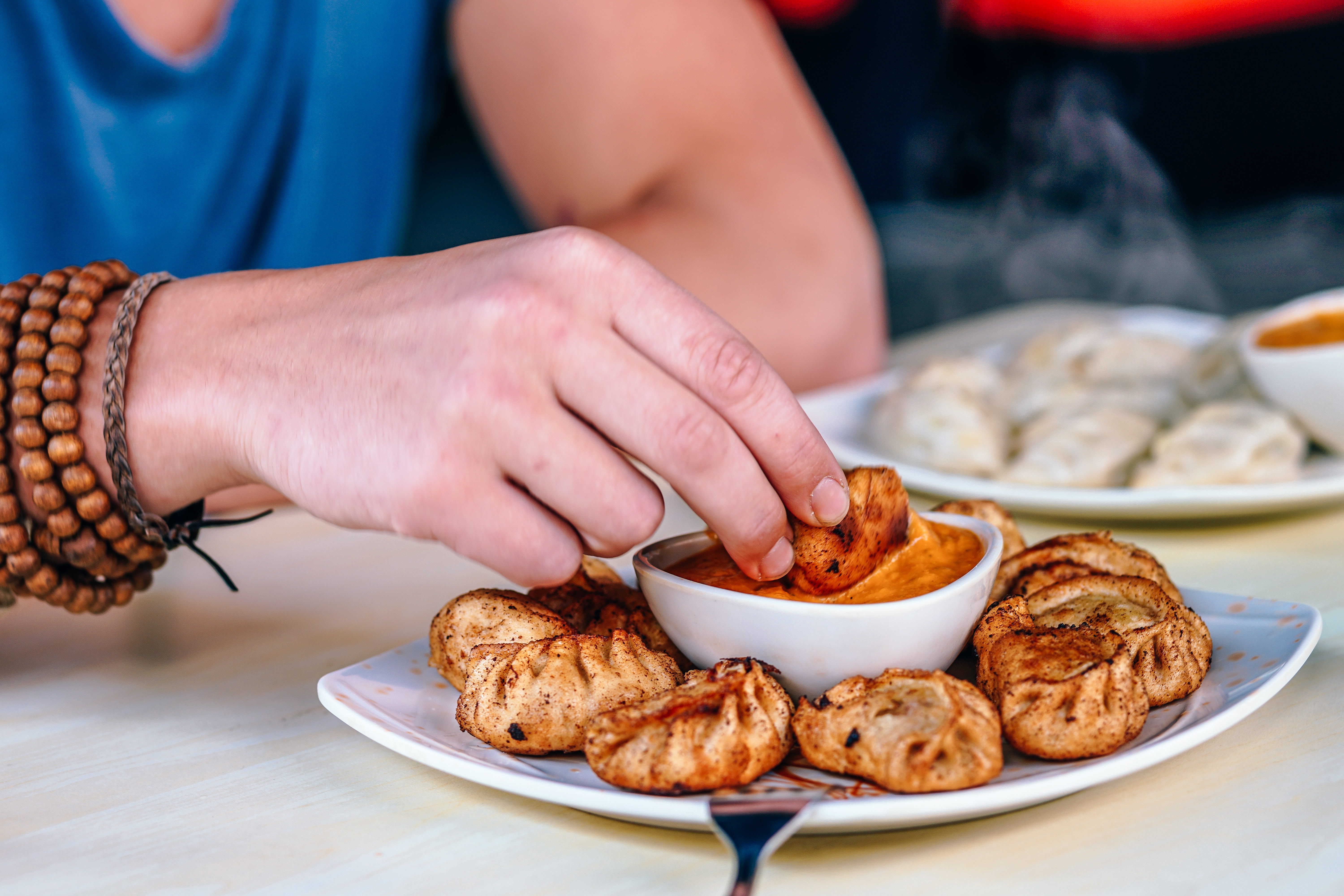 Eating, scarfing, imbibing, dining, and sating are just a few words we use to describe the act of placing food into our mouths. Conceivably it is the most significant commonality that humanity shares. Whatever shape, form, flavor, or seasoning food may take around the world, people eat. More than that, across the world people, enjoy eating. From paupers to presidents, we all break the proverbial bread in times of festivities or moments of grieving, on occasions both large or small, we bond and celebrate through food. Nevertheless, how we get the food from the table into our mouths is just as captivating as what we consume.
Eating, scarfing, imbibing, dining, and sating are just a few words we use to describe the act of placing food into our mouths. Conceivably it is the most significant commonality that humanity shares. Whatever shape, form, flavor, or seasoning food may take around the world, people eat. More than that, across the world people, enjoy eating. From paupers to presidents, we all break the proverbial bread in times of festivities or moments of grieving, on occasions both large or small, we bond and celebrate through food. Nevertheless, how we get the food from the table into our mouths is just as captivating as what we consume.
Food and the etiquette of dining are both infused with cultural meaning and history. The use of hands, forks, spoons, cutlery, and chopsticks denote significant historical factors sharpened by geography, social status, gender, tradition, and religion. How one learns to enjoy and consume food socially may be unacceptable and even offensive to another culture or place. These features intersect and layer within the cultural milieu of dining etiquette. Even inside national borders, there are varied approaches to eating that may reflect deeper intersectional identities than the simple act of eating itself.
The etiquette of how we eat, however, is not static. It is in fact dynamic. Traditions and norms transformed throughout the ages to what we see as customary within our culture. Moreover, one consequence of globalization and multiculturalism is an expansion of our palates and culinary awareness.
Hands Are Nature’s Forks
Across many cultures in the Middle East, Africa, and South Asia, it is commonplace to eat with one’s hands. There is, of course, ritualistic cleanliness that accompanies the act of eating with one’s hands. Hand washing is paramount before any meal. In some communities, a prayer follows. Traditionally, the left-hand is considered unclean or unholy. Therefore, it is customary for one to use their right-hand to eat. Moreover, eating with one’s hand reflects a certain sensuality and connection to one’s food. Bringing in this additional sense evokes a greater emotion to eating as it invites the eater to engage with their food on a tactile level as well. In many cultures, using a fork or a knife is just absurd. Increasingly, western restaurants are embracing this historical and cultural phenomenon and are encouraging their patrons to ditch the cutlery and dig in with their fingers. 
Forks Are Strange
Go to any typical restaurant in the Western world and we are most likely to find a fork waiting for us to use on the table. It is so culturally ingrained for many of us that perhaps we would be surprised to learn that forks were not always the customary utensil. Moreover, forks were once deemed sacrilegious. When a Greek niece of the Byzantine Emperor Basil II married in Venice and used a golden fork at her reception, many viewed it as an affront to God. So much so that they regarded her death a few years later as retribution.
Ancient Greeks, Egyptians, and Romans used forks, but they barely resembled the ones we use today. Moreover, they functioned as cooking tools. Forks took a few centuries to catch on and were still rare in the American colonies of the 17th century. Eventually, by the mid-1800s forks became acceptable and commonplace.
Global Chopsticks
 Chopsticks are ubiquitous in Japanese, Chinese, Vietnamese, and Korean cuisine. Used since the 4th century BCE, they have adapted to the specific culture which uses them. Japanese chopsticks are shorter and pointier while Chinese chopsticks are longer and rounder. Korean chopsticks are usually metal and flatter. Each iteration reflects the uniqueness of the culture. Shared meals are typical in Chinese culture. Hence, chopsticks are longer, so one can reach across the table. The Japanese, however, do not share food as they believe once one’s lips have touched a pair of chopsticks their spirit has come into contact. Moreover, this spiritual connection means that each person will have their own individual set. Culturally, the Japanese eat copious amounts of fish. Thus, pointed chopsticks facilitate the removal of any bones. The Koreans began using metal chopsticks in the 7th century as they thought it was a way of detecting arsenic poisoning. Silver chopsticks are more expensive than their wooden or plastic counterparts; their designed evolved to be flatter to save cost. Thanks in part to Chinese takeout and Sushi, chopsticks are now global.
Chopsticks are ubiquitous in Japanese, Chinese, Vietnamese, and Korean cuisine. Used since the 4th century BCE, they have adapted to the specific culture which uses them. Japanese chopsticks are shorter and pointier while Chinese chopsticks are longer and rounder. Korean chopsticks are usually metal and flatter. Each iteration reflects the uniqueness of the culture. Shared meals are typical in Chinese culture. Hence, chopsticks are longer, so one can reach across the table. The Japanese, however, do not share food as they believe once one’s lips have touched a pair of chopsticks their spirit has come into contact. Moreover, this spiritual connection means that each person will have their own individual set. Culturally, the Japanese eat copious amounts of fish. Thus, pointed chopsticks facilitate the removal of any bones. The Koreans began using metal chopsticks in the 7th century as they thought it was a way of detecting arsenic poisoning. Silver chopsticks are more expensive than their wooden or plastic counterparts; their designed evolved to be flatter to save cost. Thanks in part to Chinese takeout and Sushi, chopsticks are now global.
Read more about the evolution of chopsticks here.
Test your table etiquette here!
So, the next time you are about to eat just take a moment and reflect on this dynamic and flavorful history.
About CAI
Cultural Awareness International, Inc. (CAI) has 29 years of remarkable history working with HR and Business Leaders to create unique, personalized solutions that develop their employee talent to perform skillfully in the global marketplace. A woman and minority, privately owned and operated company, we holistically address organizational needs for global competency development, diversity and inclusion training, intercultural communication and global leadership with flexibility and innovation. Additionally, we provide comprehensive destination services that assist both assignees and their families in relocating to a new home and settling into their new community. Our experience collaborating with global companies across all industries and scope gives us invaluable insight to anticipate and address our clients’ needs. Our solutions target not only the needs of globally mobile individuals and their families but also that of teams and senior leadership. CAI’s expertise, creativity, and agility deliver the best sustainable solutions to hone and enhance the skills of your globally mobile talent


